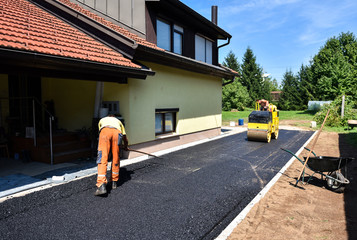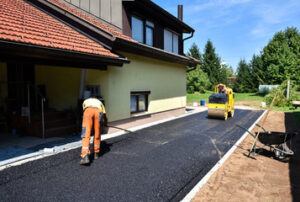If you hear scratching noises at night or see rat droppings around the house, you might have a roof rat infestation. A professional can provide you with a complete home inspection and perform professional grade repairs to get rid of these rats.
They will also use exclusion techniques to prevent them from coming back. This includes screening crawl spaces, screening roof vents, and pruning back trees that serve as stairways into your home. Contact Roof Rat Removal Service Texas now!

Rats are often drawn to properties with easy access to food and shelter. They can enter a home through holes as small as an inch, and they can chew through anything they come across. This includes electrical wires, which can lead to a house fire if they are stripped of their protective coating. Because they breed quickly and have large litters, you need to act quickly when you suspect a rat infestation.
Look for droppings in hidden areas like the spaces behind and beneath shelves, cabinets, and appliances. You may also find gnawed wood, twigs, and other debris. Rats will chew through almost anything, including drywall and support beams, so look for any damaged areas in your walls or ceilings. Also watch out for “runways,” which are tracks that rats leave behind as they move through your home.
These tracks can indicate that you have a rat problem. They will typically be dark, oily and about the size of a pea. You should also listen for sounds of rodent activity, such as gnawing or scratching. These sounds can occur throughout the day and night.
A professional pest control company will inspect the property and assess the infestation to determine how serious it is. They can then take steps to remove the rat infestation and prevent it from coming back. This will usually involve sealing entry points, removing garbage and other debris, and limiting the amount of vegetation around your home.
Because roof rats live outdoors, they will continue to visit your property to eat seeds and plants until the winter season. Once that happens, they will look for new food sources and nesting sites. They can enter homes and garden sheds through attic holes, doggie doors, air vents, and more.
To prevent these rodents from infesting your property, you should keep rubbish in tightly sealed bins (wheelie bins are best) and eliminate any sheltered spots where they can hide. You should also trim tree branches and shrubs so they are not hanging over your roof, and sanitize all food sources. You can also use natural deterrents, such as mothballs, chili pepper flakes, garlic, and other household items that the rats don’t enjoy.
A pest inspection can reveal a number of clues that help our technicians locate rat nests. Look for droppings that are capsule-shaped with blunt ends, urine stains that can be spotted using a UV flashlight and the foul odor of rodent urine. Also pay attention to gnaw marks that can be left behind on the outside of the home or in the attic. These signs will allow us to pinpoint the location of a nest and provide targeted rat control services.
These rodents are nocturnal and will make scurrying noises in walls or ceilings during the night and around dawn and dusk. If you hear them at night it is likely that they are trying to reach their food sources or their nests. They are skilled climbers and can squeeze through holes less than half an inch in diameter. They prefer to live up high and build leafy nests in attics, rooflines, or trees.
In addition to their climbing abilities, roof rats have sharp teeth that are constantly growing. They will gnaw through pipes, electrical wirings, stucco, and other materials in order to get to food or harborage. They can also gnaw through wood, wire, plastic and other items that keep them from reaching their goals.
Once a technician has located the rat nest, they will focus on blocking any entryways into your home and sealing them to prevent future rodent infestations. To prevent a rodent problem, store all food in airtight containers, clean up messes and trash right away, and trim any overhanging tree branches.
Rats are more common in urban areas, but they are just as dangerous and destructive in rural locations. Our trained technicians are experts at eliminating rat infestations.
We will create a customized service plan for your property to remove the rat infestation and prevent it from returning in the future. We may use baits, traps or both to eliminate the rat infestation and then use permanent methods such as rodent exclusion or sealing to prevent future rat problems. Regular maintenance visits will ensure that the rat infestation is never allowed to return and that the problem is eliminated completely.
Rats damage homes and property with their constant gnawing, chewing through wires and other materials. They contaminate stored food and can transmit disease through their urine, droppings and saliva. Rats are also known to destroy insulation and wood, leaving gnaw marks. Rats can also gnaw through electrical wires, posing a serious fire hazard.
There are a number of ways to prevent and control roof rats. Sealing cracks, gaps and entry points in walls, attics, basements and foundations can keep them out. Regularly trimming trees and shrubs can also prevent them from climbing on structures. Keeping rubbish, woodpiles and pet foods tightly sealed in containers with lids can help to prevent them from being used as hiding places.
The most effective method of removing roof rats is to hire a pest control service. A professional can use a variety of traps to find and remove all the rats in your home. They can also prevent them from returning for at least one year by installing a rodent exclusion barrier around your property.
Snap traps — the traditional rodent-catching traps with steel bars that snap down on a animal’s neck — are often recommended by pest control professionals for their effectiveness in killing rats quickly. Rats can be easily trapped with these traps if the bait is placed properly, and dead rats can be disposed of in a way that is not visible to children or pets.
Other trap options include glue traps and poisons. Glue traps are flat pieces of cardboard coated in glue that capture rats as they try to escape, and can cause them to tear and chew their own limbs off in desperation. Poisons can be a more humane alternative, but they still cause a great deal of pain and suffering to animals as they swell up, bleed out and die.
Some people are tempted to kill the rats themselves, but this is not an effective or safe approach. It is important to have a professional implement the proper trapping techniques and rodenticides to eradicate the problem of roof rats once and for all.
As roof rats are able to access homes through a variety of entry points, focusing on sanitation is key for effective rat control. Sealing gaps in walls and attic spaces, making sure vents are screened, and removing piles of wood and rubbish can help deter these nocturnal pests. Keeping food stored in sealed containers and cleaning up after pets can also reduce rat infestations. Since roof rats are attracted to moisture, addressing leaks and preventing damp areas can also help prevent the arrival of these rodents.
While these steps may help prevent a rat infestation, the most efficient way to eliminate an existing one is by hiring a professional rat exterminator. Pest control experts are trained to quickly and safely remove these pesky rodents without harming humans or animals, as well as to provide a lasting barrier against future infestations.
The first step in rat removal is to locate the nest. The most common places where these rodents build their nests include on ledges, behind shelves, in garages and sheds, and in attics. Once the location is identified, traps can be placed near the nest or along the path of the rat. Rat traps are usually baited with a tasty treat like jerky, fruit, or nuts. Rats are typically more cautious than mice and may take a few days to approach the bait, but they will eventually become used to the traps and learn to trust them.
The next step in rat control is to identify how the rats entered your home and block any possible entries. Since these pests are able to squeeze through holes as small as half an inch, a thorough inspection of the exterior of your home is crucial. Look for potential entry points along the roofline, under overhanging branches or vines, in basement crawl spaces, and around vents and pipes.





